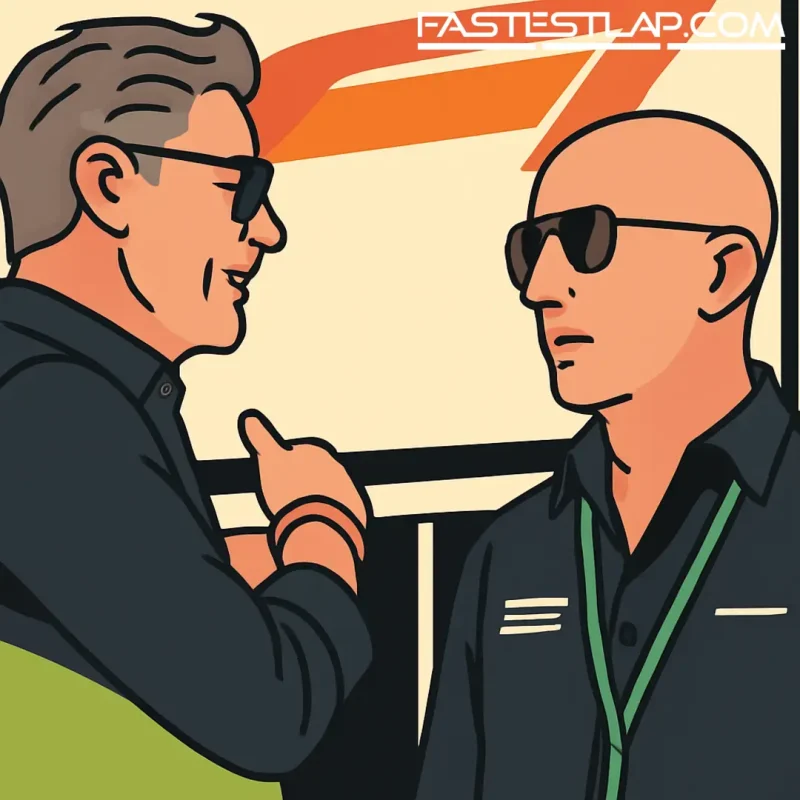Cadillac’s F1 startup is swinging for the fences before a wheel turns in anger.
Team bosses Graeme Lowdon and Dan Towriss are shopping a title sponsorship package in the $55–70 million range for the outfit’s inaugural season, according to Sports Business Journal — a punchy valuation that plants the General Motors-backed entry firmly in the big-league conversation before its 2026 debut.
This isn’t just about slapping a name on the car. The new operation, run by TWG Motorsport with Cadillac branding from GM, is positioning itself like an established heavyweight. Alongside title rights, the team’s gone to market with a full pyramid of inventory: premium partner, team partner, official partner and supplier tiers. Agencies have been engaged to open doors, and some names are already on the books — Tommy Hilfiger is involved, while Jim Beam has been announced as “official spirits partner.”
It’s the sort of commercial push you make when you expect to matter.
The target itself sits in rare air. Title rights at the sharp end of the grid have been hovering near nine figures in recent years — Oracle at Red Bull Racing being the obvious benchmark, and McLaren’s Mastercard deal said to be in that zip code too. For a brand-new team to pitch $70m straight out of the box is equal parts ambition and signal: GM’s arriving with intent, and it wants its sponsorship ecosystem to look like it.
The appetite appears to be there. “There is a significant amount of quality companies in quality sectors – with larger interest coming offshore than domestic currently – in sponsoring General Motors’ relationship to Formula 1,” sports marketing executive Chris Lencheski told SBJ. When one of the world’s largest automakers throws its weight behind F1, eyeballs follow — especially from brands that need global reach and love the sport’s tight marriage of technology and entertainment.
Cadillac’s road to the grid has already been prologue-worthy. The selection process that kicked off in early 2023 turned turbulent, drawing scrutiny from the U.S. Department of Justice along the way. The project ultimately secured its spot on the 2026 entry list — with tweaks to the name above the door, but not the substance underneath. Now comes the costly part: turning a badge and a business plan into a racing team capable of lining up with the 10 incumbents.
And the bill is very real. Start-up capex is brutal: facilities, machine tools, wind tunnel time, simulation hardware and software, race trucks, spares, plus a hiring spree that siphons experience from up and down the pit lane. While the long-term enterprise value of an F1 entry has exploded, even in the cost-cap era, it still takes significant outside revenue to make the numbers sing.
On that front, context matters. The financial goalposts are shifting slightly for 2026, with the cost cap headed to $215m and more items folded under its umbrella — an effective indexation rather than newfound headroom. In other words, the sport keeps a tight leash on spending, but it isn’t getting cheaper to run at a high level. New teams, especially, need a runway.
Would Cadillac take a different path and go without a single title backer? It’s an option. McLaren proved for years that a diversified, multi-partner model can work just fine, spreading risk and avoiding an overreliance on one logo. But landing a title sponsor does two things a newcomer can’t buy: it stamps credibility on day one and telegraphs that the project is more than a marketing exercise. It says somebody with a big balance sheet has kicked the tires and likes what they see.
The $70m question, then: is the ask realistic? If you’re selling pure on-track performance, probably not on year one. If you’re selling the global heft of General Motors, the scale of Cadillac, the opening of F1’s 11th team and the pent-up brand demand around the series, it starts to pencil. The top teams monetize wins. Cadillac is trying to monetize a narrative — GM’s arrival, a clean-sheet team and the promise of what that can become.
Behind the scenes, Lowdon and Towriss are doing what every successful modern F1 program does: building a commercial machine that can keep pace with the technical one. The market will decide if the title slot clears at $55m, $70m or not at all. But make no mistake, this is a statement play. If they land it, Cadillac walks into 2026 with a headline partner and a balance sheet that looks suspiciously like a front-runner’s.
And if they don’t? Expect a deep roster of premium and team partners to fill the livery anyway. Either way, the message has been sent: Cadillac isn’t easing into Formula 1 — it’s arriving like it belongs.




